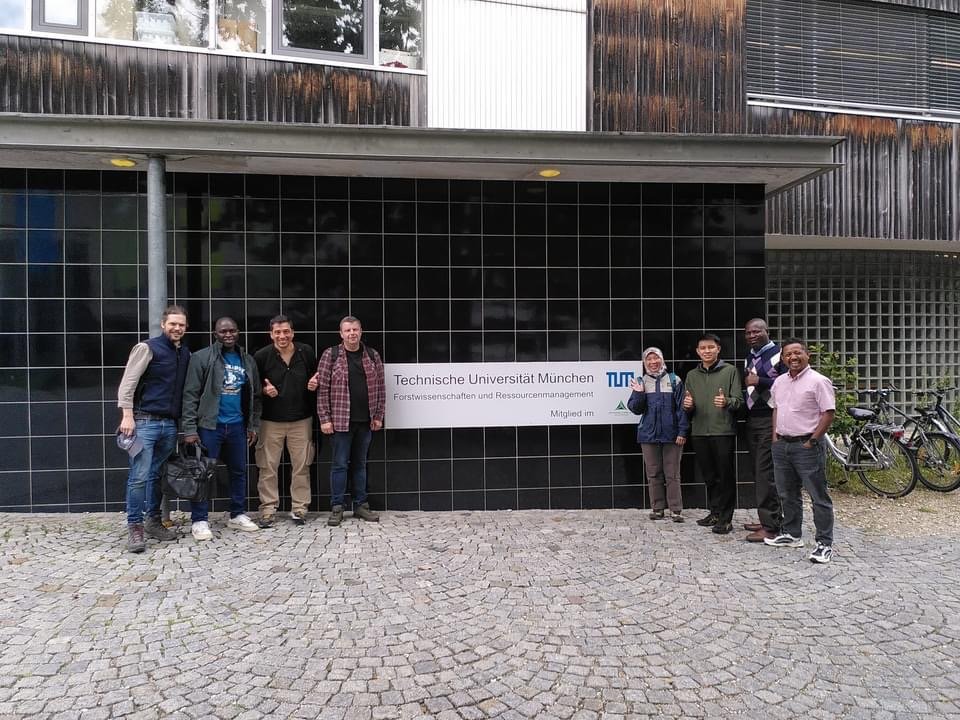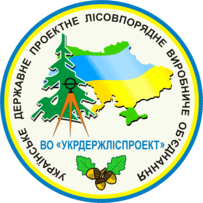Studying modern methodologies for conducting national forest inventory (NFI) and environmental monitoring of forest ecosystems, with a focus on adapting these approaches to climate change, within the framework of the Forest Expert Programme, funded by the German Federal Ministry of Food and Agriculture (BMEL) and implemented by the German Forest Society.
Andriy Shamrai, Head of the National Forest Inventory Centre of Ukrderzhlisproekt, visited Germany to exchange professional experience in forest management with experts from around the world.
Ministries, state and private forestry enterprises, and forest associations in Germany participate in the internship.
The main objectives of the internship are:
– Familiarisation with the methodologies of conducting NFI in Germany;
– Study of approaches to multi-level environmental monitoring, including the international joint programme for assessing and monitoring the impact of air pollution on forests (ICP Forests);
– Analysis of forestry adaptation strategies to climate change;
– Study of mechanisms for using data to make management decisions in the field of forest protection and sustainable forest management.
German experience: The German NFI is conducted every 10 years and is a tool for systematic data collection on the state of the country’s forest resources.
The inventory is based on statistical sampling using a regular 4×4 km grid, which allows for highly representative data at the national level. Particular attention is paid to the assessment of timber stocks, the structure of age and species groups, and biodiversity. The NFI data is the basis for forest development forecasting, carbon balance assessment and reporting to the European Union.
During the visit, the multi-level environmental monitoring system used in Germany under the ICP Forests programme, which includes three levels of monitoring, was reviewed in detail:
– Level 1: Large-scale monitoring of tree canopy health and overall forest health in a large number of sample plots. The condition of tree crowns, the level of defoliation and other indicators are assessed.
– Level 2: Intensive monitoring at selected permanent sites, where detailed analysis of soil characteristics, water balance, chemical composition of precipitation, vegetation and other factors affecting forest ecosystems is carried out.
– Level 3: Specific research and experiments aimed at studying certain ecosystem processes, in particular, the response of forests to climate change and anthropogenic impacts.
An important part of the visit was an introduction to the models and tools used to forecast forest development and assess the timber market.
The WEHAM (Waldentwicklungs- und Holzaufkommensmodellierung) model is used to forecast the development of forest resources and timber volumes in Germany.
WEHAM allows for the assessment of the long-term impacts of different forest management scenarios, including climate change, changes in forest species composition and different timber use strategies. The model takes into account the impact of various factors, such as economic, environmental and social conditions, and allows for scientifically based forecasts of forest resources development.
The nFIESTA (Forest Inventory, Estimation, and Analysis) platform is a powerful tool for analysing national forest inventory data. This platform combines methodological approaches to forest resource assessment using probabilistic sampling and statistically sound estimates. nFIESTA can work with data from different countries, providing integrated estimates that allow for international comparison of forest resources. Importantly, the platform supports the integration of remote sensing data with field data, which significantly improves the accuracy of the estimates.
The main part of the field visits during the visit was devoted to the study of Continuous Cover Forestry (CCF) and Agroforestry approaches.
Continuous Cover Forestry (CCF) is an approach that involves maintaining a continuous forest cover in a certain area through natural or selective felling of trees.
The distinctive feature of CCF is the rejection of clear-cutting in favour of selective tree selection, which allows preserving the structure and functions of the forest, increasing its resistance to diseases, pests and climate change. This approach allows us to preserve biodiversity, maintain high quality soil and water resources, and ensure a constant flow of timber without the need for significant landscape changes.
Agroforestry is a land management system that combines the cultivation of trees with crops or livestock on the same land. This practice helps to increase soil fertility, protect water resources, improve the microclimate, and provide additional sources of income for farmers. Agroforestry is important for the conservation of ecosystem services and can be an effective tool for climate change adaptatio.
The data collected under the NFI and ICP Forests are actively used to inform forestry and environmental policy decisions. These data are used to develop forest development models, assess opportunities for increasing carbon sequestration, and report to international organisations.
The trip to Germany was an important step in expanding the knowledge and acquiring new skills in forest inventory and environmental monitoring. The experience gained is extremely valuable for the development of the national forest inventory system in Ukraine. It is recommended to consider the possibility of implementing the methods used in Germany.
State Forest Resources Agency of Ukraine


